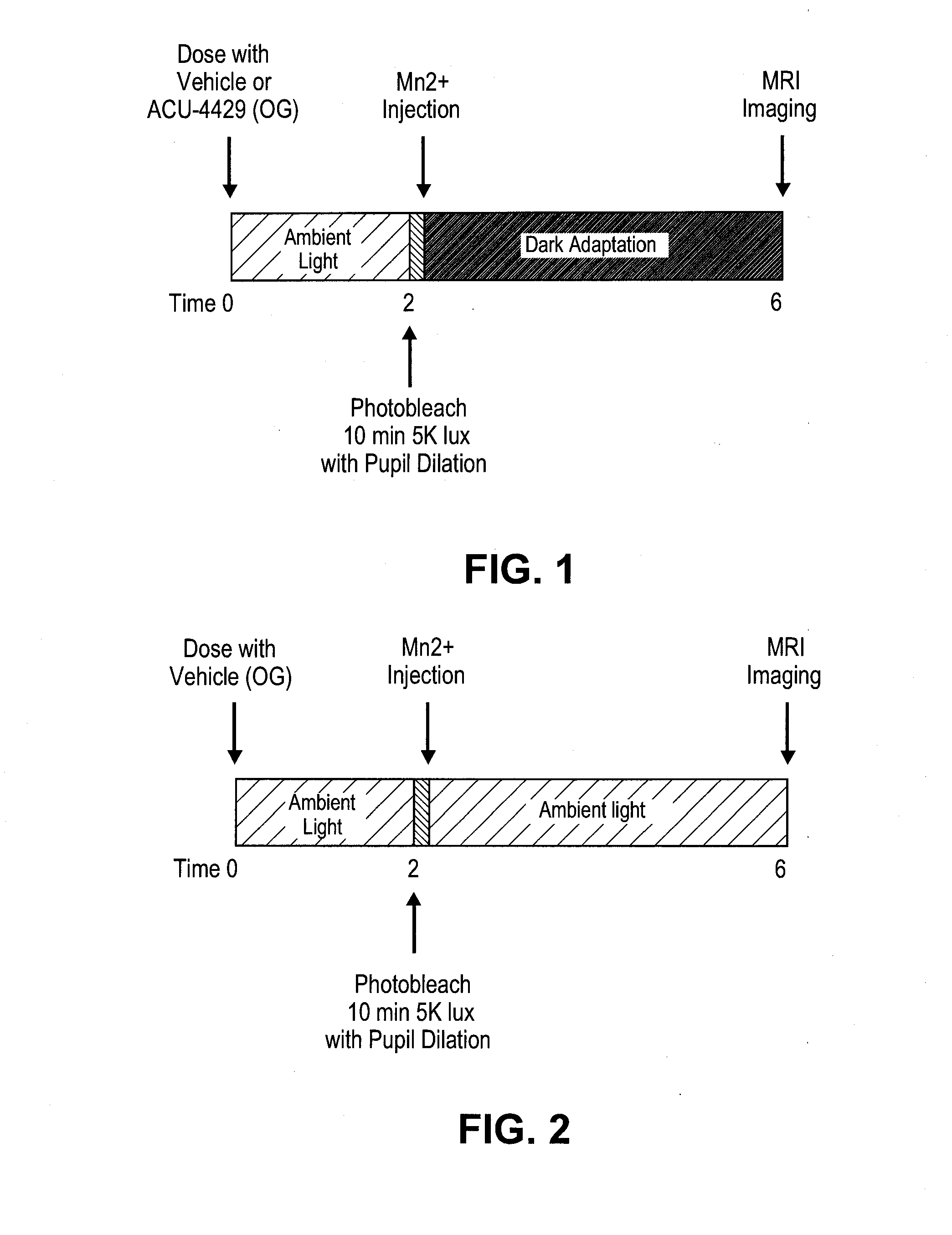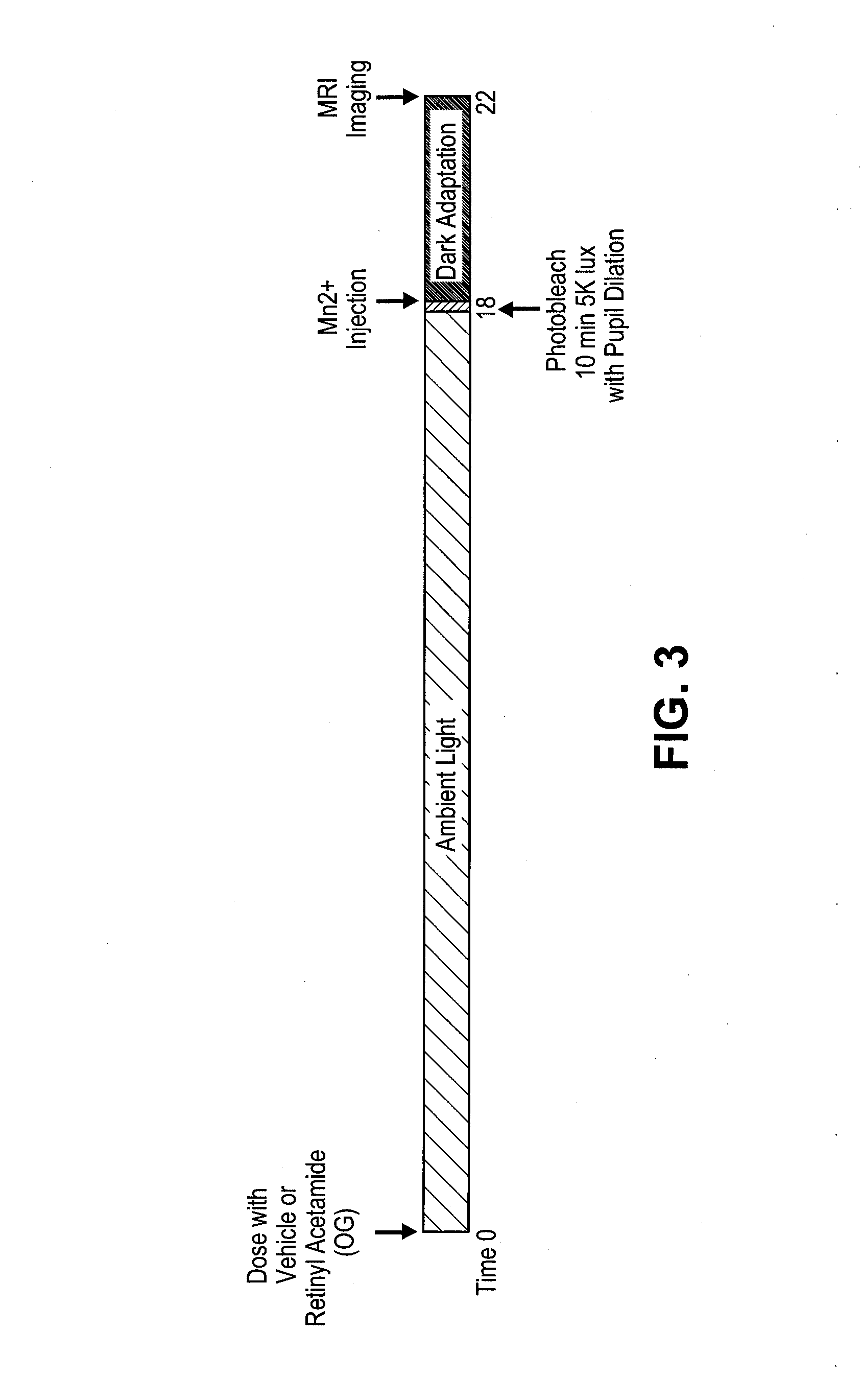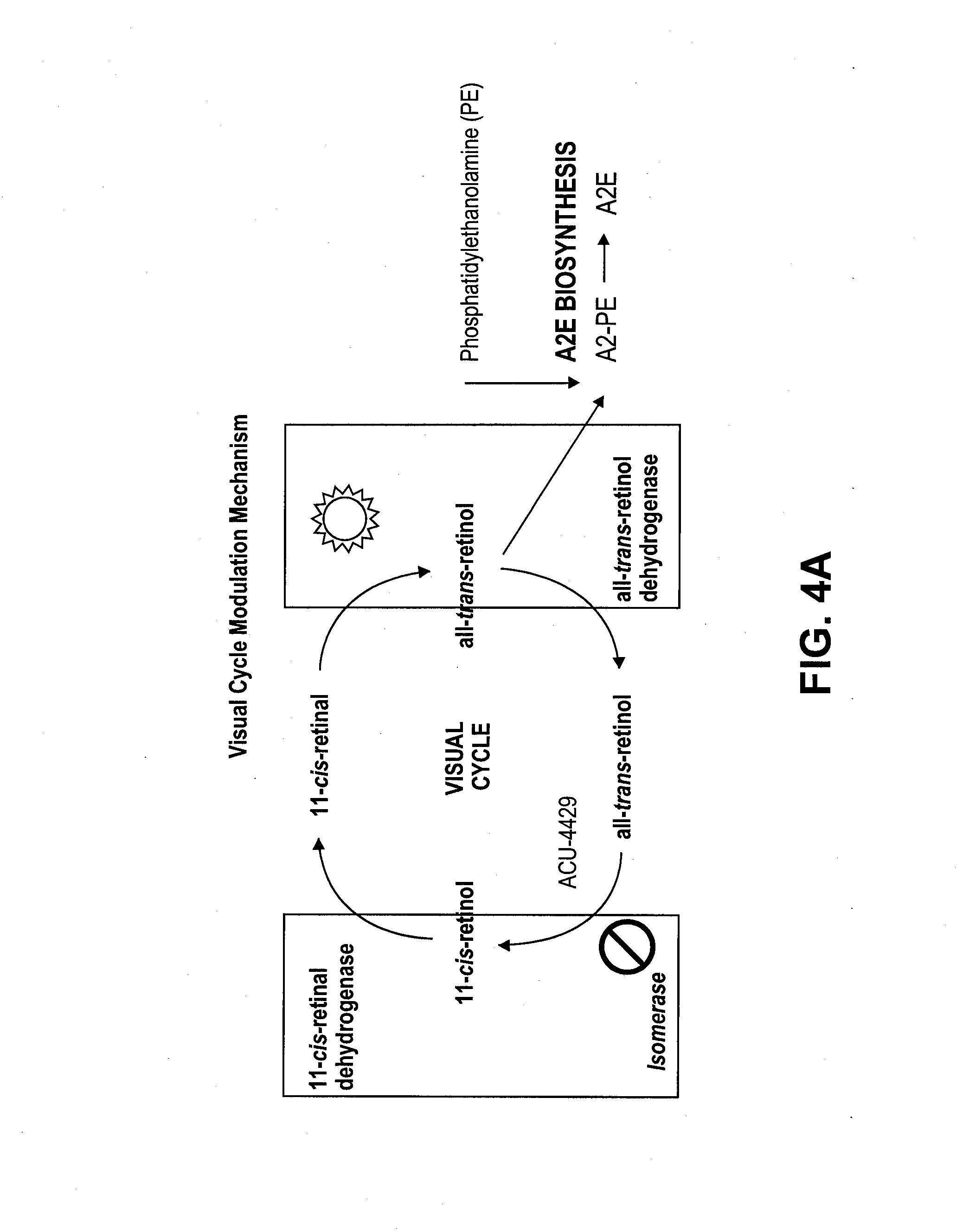Methods for the treatment of diabetic retinopathy and other ophthalmic diseases
a technology for diabetic retinopathy and other ophthalmic diseases, applied in the direction of antinoxious agents, drug compositions, metabolic disorders, etc., can solve the problems of increasing the risk of life-threatening systemic vascular complications, increasing the survival rate, and the highest risk of rop, so as to improve function and/or suppress the visual cycle, suppress the effect of energy demand
- Summary
- Abstract
- Description
- Claims
- Application Information
AI Technical Summary
Benefits of technology
Problems solved by technology
Method used
Image
Examples
example 1
Accepted Animal Models of Diabetic Retinopathy
[0343]Mice, rats, hamsters, dogs, cats, and monkeys are some of the common animal models that are used for studying Diabetic Retinopathy.
[0344]Animal experiments have been pivotal in the understanding of the pathogenesis of retinopathy since systematic structural, functional and biochemical studies cannot be undertaken in human subjects Animal experiments are of immense importance in an attempt to develop adjuvant treatment strategies. Characteristic retinal lesions in diabetes have successfully been reproduced in experimental diabetic or galactose-fed animals.
[0345]Data obtained from cell culture assays and animal studies can be used in formulating a range of dosage for use in humans. The dosage of such compounds lies preferably within a range of circulating concentrations that include the ED50 with little or no toxicity. The dosage may vary within this range depending upon the dosage form employed and the route of administration utiliz...
example 2
Use of Compounds for the Treatment of Diabetic Retinopathy
[0359]A single-center, open-label, dose-escalating pilot study is initiated to evaluate the biologic activity of oral administration of compounds described herein in patients with center-involving clinically significant diabetic macular edema (DME) and to report any associated adverse events. Patients with DME involving the center of the macula and best-corrected visual acuity (BCVA) in the study eye between 20 / 63 and 20 / 400 are enrolled.
[0360]Eligible patients are randomly assigned in a 1:1 ratio to receive daily oral doses of compound (2 mg, 5 mg, 7 mg, 10 mg or 20 mg) administered until month 24. Primary end points are the frequency and severity of ocular and systemic adverse events. Secondary end points are 1) best corrected visual assessment as assessed with the Early Treatment Diabetic Retinopathy Study (ETDRS) chart, with the use of standardized refraction and testing protocol at a starting test distance of 2 m and 2) ...
example 3
Manganese-Enhanced Magnetic Resonance Imaging (MEMRI) Protocol
[0363]Rats are to be maintained in regular laboratory lighting (12 hours light, 12 hours dark) prior to start of experimental period—light exposure, bleaching, dark adaption will vary by cohort (see below).
[0364]Animals are to be dosed by oral gavage according to group assignment below. Rats are to be weighed each week of the experimental period.
[0365]Dilate pupils by applying 1 drop of tropicamide (0.5%) 10-30 minutes before photobleaching. Photobleach animals for 10 minutes by exposure to 5000 lux 4 hours before MRI imaging.
[0366]Inject rats immediately after bleach, 4 hours prior to the start of imaging session. MEMRI signal reflects state of expression of activity-dependent channels during experimental period.
[0367]Inject MnCl2 is intraperitoneally in lower right abdomen of awake rat.
[0368]MnCl2 is injected at 60 mg / kg using a 20 mg / mL stock solution.
[0369]Mark each rat injected and record injection, time of bleach, s...
PUM
| Property | Measurement | Unit |
|---|---|---|
| time | aaaaa | aaaaa |
| time | aaaaa | aaaaa |
| time | aaaaa | aaaaa |
Abstract
Description
Claims
Application Information
 Login to View More
Login to View More - R&D
- Intellectual Property
- Life Sciences
- Materials
- Tech Scout
- Unparalleled Data Quality
- Higher Quality Content
- 60% Fewer Hallucinations
Browse by: Latest US Patents, China's latest patents, Technical Efficacy Thesaurus, Application Domain, Technology Topic, Popular Technical Reports.
© 2025 PatSnap. All rights reserved.Legal|Privacy policy|Modern Slavery Act Transparency Statement|Sitemap|About US| Contact US: help@patsnap.com



